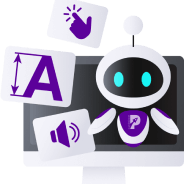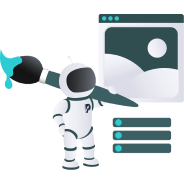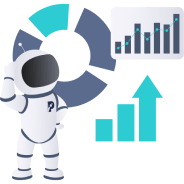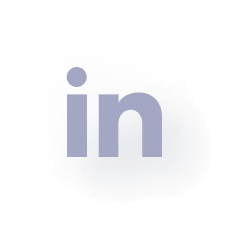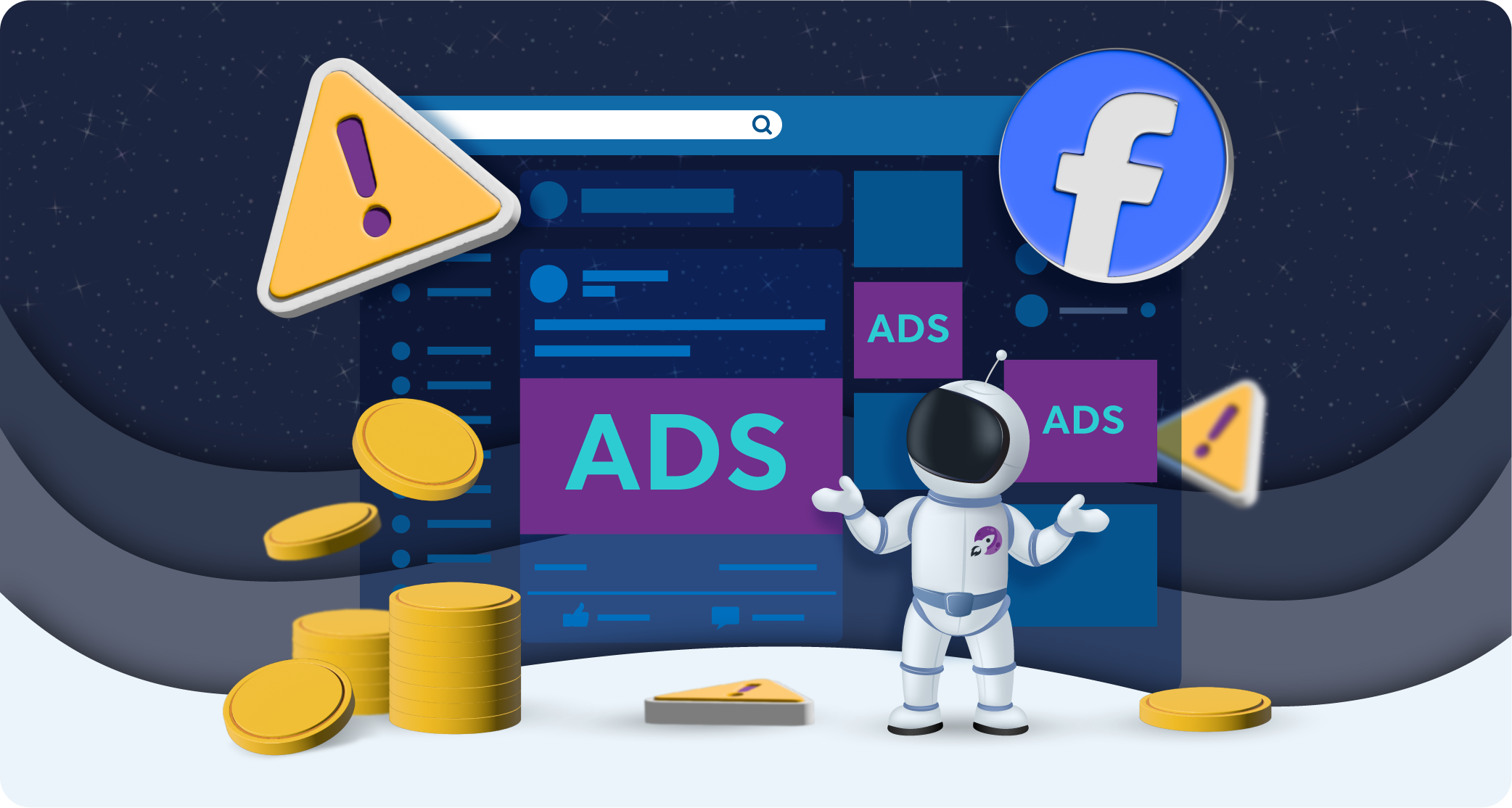

Troubleshooting Facebook Ads: Why Your Ads Aren’t Converting
Key Takeaways
-
The most common reasons ads fail involve poor audience targeting and unengaging creative choices.
-
Success with Facebook ads won’t come instantly. You’ll need to test variables, learn from the data, and continuously refine.
-
Fortunately, you don’t need a massive budget to see real results. With the right setup, even small businesses can generate leads, make sales, and build brand awareness.
Facebook ads can deliver fantastic results, but not always right away. Many advertisers have experienced the frustration of running campaigns that attract clicks and impressions but fail to convert them into sales or leads. If your Facebook ads aren’t performing as expected, don’t panic. Often, minor adjustments can significantly improve your results.
In this article, we’ll walk through a troubleshooting process to help you pinpoint exactly why your Facebook ads might be underperforming. By methodically analysing audience targeting, ad creative, landing pages, conversion tracking, and more, you’ll quickly identify problem areas and find practical ways to turn your campaigns around.
Let’s dive in:
What can you realistically achieve from Facebook ads?
Facebook ads can yield excellent results for businesses of all sizes. Realistic expectations include increased brand awareness and sales, boosted website traffic, and a consistent stream of new leads. Results, of course, depend heavily on your industry, strategy, and how compelling your offer is.
Don’t be afraid to hope for the best – success can happen with consistency. Of course, setbacks and low returns initially are to be expected. The good news is initial failure isn’t unusual – or permanent.
Most successful advertisers go through an early period of learning and refining. Many small and medium-sized businesses regularly see strong results from Facebook ads. While not every campaign delivers instant success, consistent success is entirely achievable when you understand your audience, target precisely, offer genuine value through your ads, and optimise continuously based on real-time results.
To boost your chances of success with Facebook ads, you’ll need to understand the common reasons why Facebook ads fail to convert and how you can troubleshoot your ads thoroughly to get to the bottom of your issue.
Common reasons why Facebook ads fail to convert
Consider the following common causes of low conversion rates among Facebook ads. Some won’t apply to your business, but these are the sorts of issues you can expect to find:
- Poor audience targeting, whether it’s too broad or the wrong demographic.
- Creative choices that fail to capture attention.
- Unclear or overly complex messaging.
- Showing the same ad too much to the same users, causing ad fatigue.
- Not updating creative choices frequently enough.
- Not allowing ads to run for long enough.
- A weak value proposition.
- Landing pages that fail to communicate value, offer a poor user experience or are too greatly mismatched to the ad content.
- Ambiguous CTAs.
- Placing ads in the wrong areas.
- Choosing misaligned ad formats (e.g., carousels or videos)
- Budgets that are spread too thin to be effective.
- Using bidding strategies that don’t align with your objectives.
- Incorrectly setting up tracking pixels.
- Ignoring or misunderstanding performance data.
- High competition.
- Economic factors like recessions, holidays, or seasons.
It may be that some of these common factors scream out at you. If not, we’ll now explore a step-by-step guide to help you figure out which of these issues are present for you.
8-step guide to troubleshooting Facebook Ads
Step 1: Check your ad analytics
The first place to look when your Facebook ads aren’t converting is Ads Manager. Here, you’ll find key performance metrics that can help you understand how your campaigns are performing at each stage of the funnel.
Start by looking at your click-through rate (CTR). If your CTR is low (generally below 1%) it’s a sign that your ad creative, messaging, or audience targeting isn’t resonating. People might be seeing your ad but aren’t compelled to click, which often points to issues with how eye-catching or relevant your ad appears in their feed.
If your CTR looks healthy, but you’re still not seeing conversions, the problem likely lies further down the line. In this case, check your conversion rate. A strong CTR paired with a low conversion rate suggests that users are interested enough to click but are dropping off once they reach your website or landing page. This could mean the page doesn’t match the promise of the ad, the user experience is poor, or the offer just isn’t compelling enough to drive action.
Finally, take a look at your ad frequency. This metric tells you how many times, on average, each person has seen your ad. If the frequency is too high (typically over three or four), you may be running into ad fatigue.
When the same people see your ad repeatedly, they start tuning it out, or worse, getting annoyed by it. This can lead to a decline in performance and wasted budget. At this point, it may be time to refresh your ad design or broaden your audience to keep the campaign effective.
Step 2: Inspect creative elements
The visual and written elements of your ad play a major role in whether people stop scrolling and take action. Ask yourself whether the imagery or video used in the ad is striking enough to grab attention within the first second or two.
On a platform as fast-paced as Facebook, visuals that blend into the feed or lack energy are likely to be ignored. Your ad design should feel tailored to your audience and platform, ideally using bold visuals, strong movement, or recognisable brand elements to stand out.
Your messaging should also clearly explain what you’re offering and why it matters to your audience. Too often, ads fail to communicate value quickly and simply. Make sure your copy speaks directly to a need or desire, and that it encourages the viewer to take a specific next step.
Don’t forget that a simple creative A/B test can reveal what resonates with your audience and help you improve performance without changing your budget or targeting.
Step 3: Evaluate audience targeting methods
Once you’ve reviewed your performance metrics, the next step is to examine your audience targeting.
Start by considering whether your audience is too broad. If your targeting is too general (such as aiming at all adults in a country) you risk showing your ads to people who have little to no interest in what you’re offering. This often leads to low engagement and wasted ad spend.
In this case, it’s important to refine your audience using more specific interests, behaviours, or demographic filters that align more closely with your ideal customer profile.
On the other hand, targeting too narrow an audience can also cause problems. If your audience is too small, Facebook has less data and less room to optimise ad delivery. This can lead to higher costs per result. Expanding your targeting slightly (without losing relevance) can help Facebook’s algorithm find more people who are likely to convert.
You should also review any Custom Audiences you’re using. These include people who have visited your website, added items to their cart, or engaged with your business on Facebook or Instagram. If these audiences are misconfigured or out of date, your ads may be missing key warm leads.
Make sure your pixel or conversion API is correctly installed and that your remarketing lists are populating as expected. A well-built Custom Audience is an amazing tool for improving ad performance, but only if it’s functioning correctly.
Step 4: Analyse the experience your landing page offers
After someone clicks on your ad, the landing page experience is what ultimately determines whether they convert. If your ads are getting clicks but not leading to results, it’s crucial to click through yourself and view the landing page from a user’s perspective.
Start by checking how quickly the page loads. Ideally, it should load in under three seconds – any longer, and you risk losing visitors before they even see your offer. Slow loading times are one of the most common reasons users abandon a page without taking action.
Next, consider how visually and thematically consistent the landing page is with the ad. The transition from ad to page should feel seamless. If your ad uses a specific tone, visual style, or messaging, the landing page should reflect the same look and feel. Disjointed experiences can confuse or deter users, reducing the chance of conversion.
It’s also important to assess how clear and prominent the call-to-action is on the landing page. Visitors should be able to instantly see what you want them to do, whether it’s making a purchase, signing up for a service, or filling out a form. The CTA should be visually distinct and easy to follow without having to scroll or search for it.
Finally, look for any technical or usability issues that could disrupt the user journey. Broken forms, unclear buttons, confusing navigation, or distracting pop-ups can undermine trust and cause users to leave. Test the page across different devices and browsers to ensure everything works smoothly and provides a consistent, user-friendly experience.
Step 5: Review conversion tracking
Even if your ads appear to be running well, it’s impossible to measure success accurately without reliable tracking in place. That’s why it’s essential to review your conversion tracking setup, starting with the Facebook Pixel or the Conversion API.
These tools collect data about user actions on your website, allowing Facebook to optimise your campaigns and report on results. If the pixel or API isn’t installed correctly, you may be missing out on crucial performance insights or making decisions based on inaccurate data.
To check that everything is working as it should, head to the Events Manager in Facebook Ads. This is where Facebook will flag any setup errors, missing events, or configuration issues that could affect your tracking. Pay attention to any warnings, as even small misconfigurations can have a significant impact on reporting and optimisation.
You can also use the Meta Pixel Helper to see whether your pixel is firing properly when you visit different pages of your website. It will tell you if the pixel is installed, whether it’s collecting data, and what specific events are being tracked. This tool is especially helpful for identifying problems in real-time as you test your user journey.
Once the pixel or Conversion API setup is confirmed, make sure your key events are being recorded accurately. For example, if your goal is to drive purchases, ensure that every completed purchase triggers the correct event. Similarly, if your campaign is designed to generate leads, double-check that submissions from your form are being tracked.
Step 6: Revisit your bidding strategy and budget
Once you’ve reviewed your creative elements, targeting, and tracking, it’s time to evaluate how effectively you’re allocating your budget and whether your bidding strategy aligns with your campaign goals.
Facebook’s advertising platform is designed to optimise performance based on the objective you choose, but it still needs enough data and budget to work efficiently. If your budget is stretched too thin across multiple ad sets, each one may struggle to exit the learning phase or generate meaningful results. In such cases, it’s often more effective to consolidate your ad spend and focus more budget on the ads or ad sets that are already showing strong performance.
Your bid strategy should also be aligned with what you’re trying to achieve. For example, if your goal is conversions then your campaign should be optimised specifically for conversions rather than clicks or impressions. Optimising for the wrong objective can lead to vanity metrics that look good on paper but don’t deliver tangible business results.
It’s also important to check how your budget is pacing throughout the campaign. If a particular ad set is performing well and consistently delivering conversions at a good cost, you may benefit from gradually increasing the spend on that ad set to maximise results.
Conversely, underperforming ad sets might be eating into your budget without offering much return, so you’ll want to reduce or pause them. Being proactive about managing your budget and bidding strategy ensures that your ad spend is working as hard as possible to meet your objectives.
Step 7: Investigate competitors and market trends
Even when your ads are well-crafted and technically sound, external factors can have a significant impact on performance.
One of the first things to consider is the competitive environment. If your competitors are running more aggressive or compelling ad campaigns (perhaps offering deeper discounts, stronger guarantees, or flashier creatives) they may be drawing attention away from your ads, even if you’re targeting the same audience.
Tools like Facebook’s Ad Library allow you to see what ads competitors are running, which can help you gauge how your messaging and offers compare.
You should also consider any shifts in your market that might be affecting user behaviour. These could include seasonal trends, such as holidays or industry-specific events, which often influence consumer priorities and spending patterns.
For instance, if you’re running ads during a peak holiday period, people might be more inclined to buy, but your competition will also be fiercer. Alternatively, during off-peak times, users may not be in a buying mindset, requiring a different approach to messaging or lead generation.
Broader economic and social factors can also play a role, such as rising costs of living, sudden news events, or changes in consumer confidence. In these cases, it’s wise to adapt your tone, reposition your offer, or highlight different value points that speak to your audience’s current mindset.
Step 8: Test and repeat
The final and most ongoing part of troubleshooting Facebook ads is embracing a mindset of continuous improvement. Rather than viewing a campaign as something you launch and forget, it’s a living process that evolves with your audience and the platform itself.
One of the most effective ways to maintain and improve performance over time is by regularly updating your creative assets. If the same visuals or copy are shown repeatedly to the same audience, people are likely to lose interest. Refreshing your creative helps keep your ads engaging and effective.
Ongoing A/B testing should also be a core part of your strategy. By systematically testing different elements, you can gather real insights into what works best for your brand. Even small adjustments can reveal valuable information and lead to meaningful performance improvements; the key is to test one variable at a time so you can isolate its impact.
Ensure you keep track of what you’ve changed and how those changes affect results. Document each test, note when changes were made, and monitor how key metrics respond over time. This kind of tracking helps you avoid repeating past mistakes and identify trends in what your audience prefers.
Final thoughts
Perhaps the most important factors in the success of Facebook ads are creative decisions and audience targeting methods. These elements reflect the depth of your understanding of your audience. As a result, these should be prioritised in any campaign makeover.
In addition, businesses should make friends with the data and analytics tools. These will be your best help in understanding and improving your ads over time.
Businesses mustn’t expect instant results. Any advertising campaign is a process – including experimentation, testing, and continual optimising. Even if your business has a smaller budget, you can see great results if your efforts are accurate and consistent.
For further assistance with your paid ads, reach out to us here at purpleplanet. We offer a whole suite of digital solutions:

